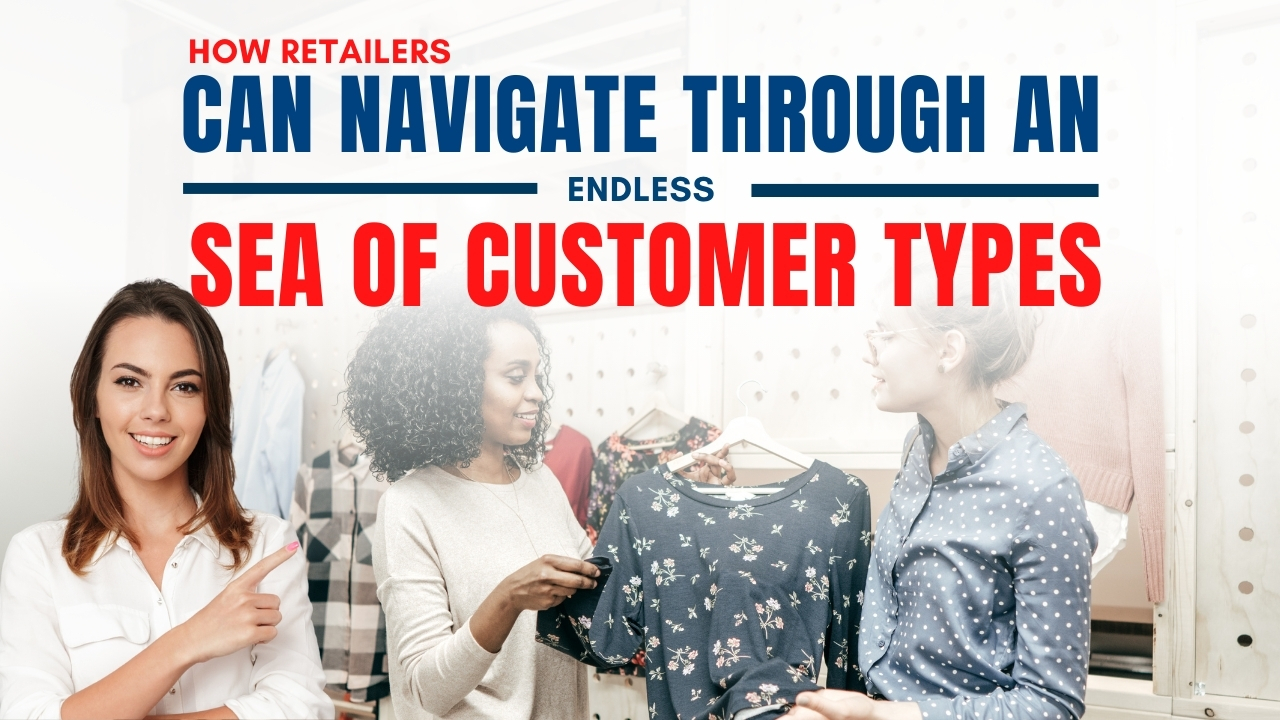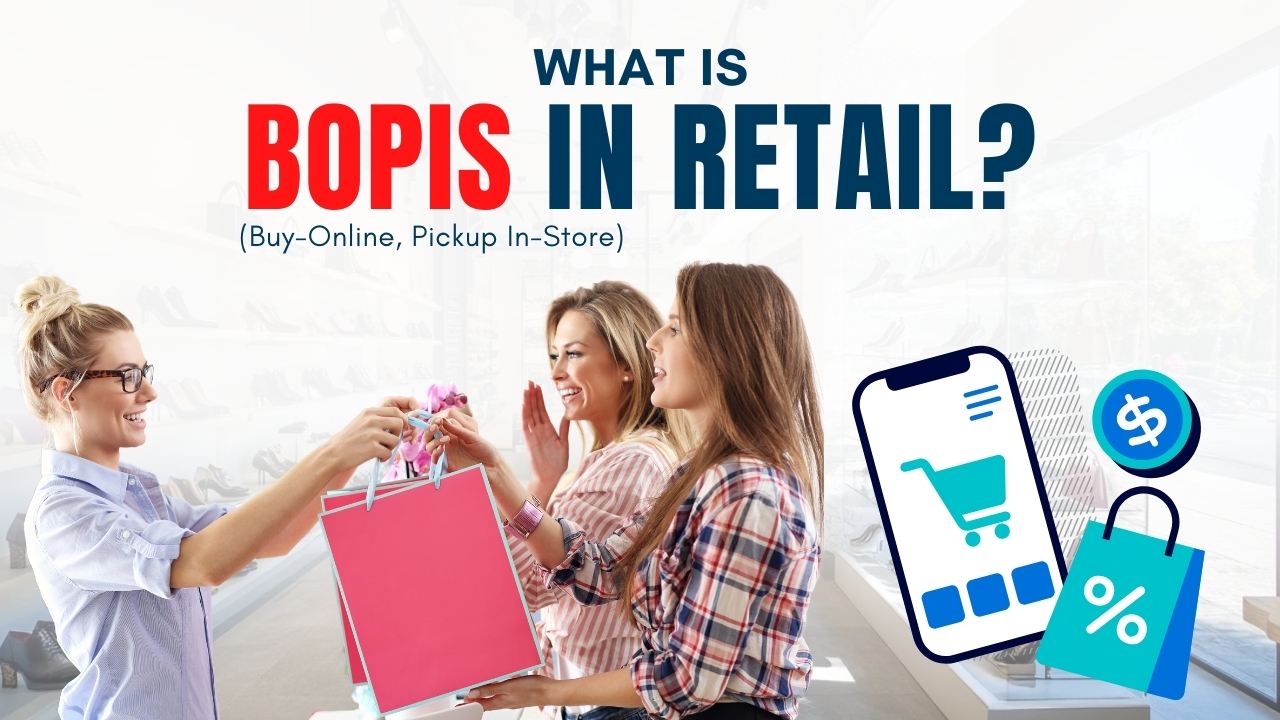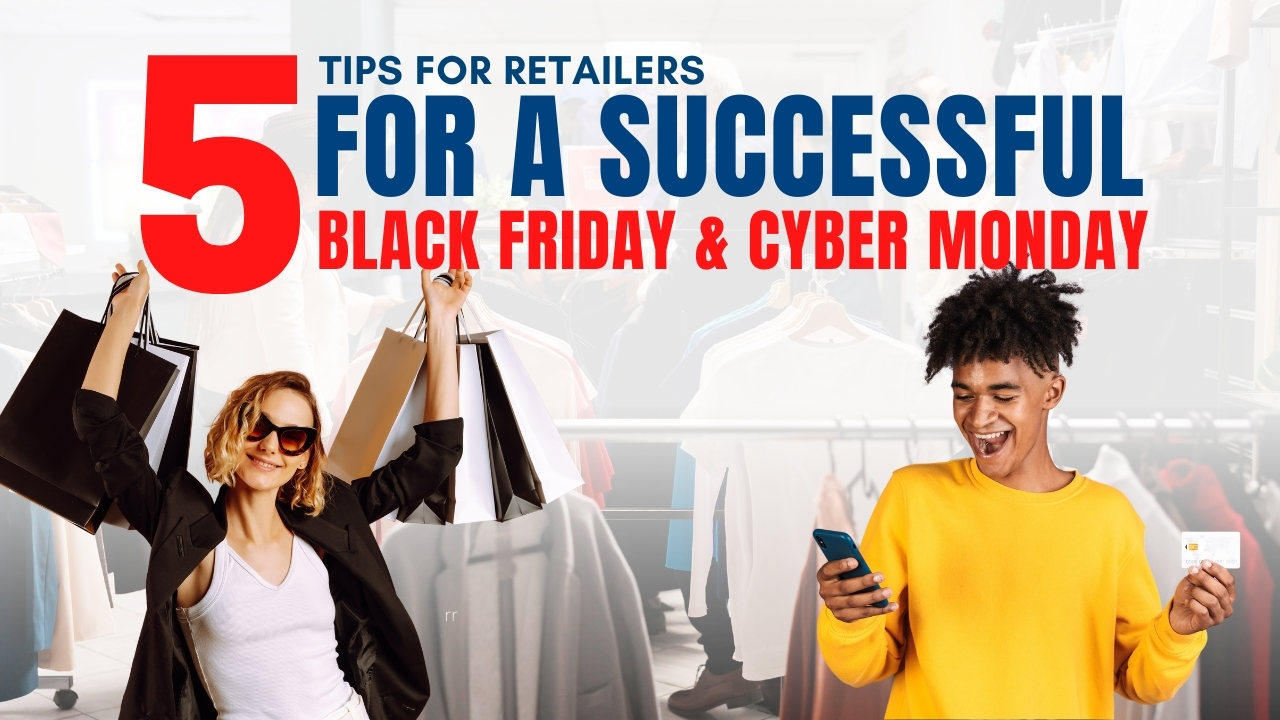Blog
How Retailers Can Navigate Through An Endless Sea of Customer Types
November 7, 2024 / 11 minute read / By Nick Borowitz

Blog

In today’s complex retail landscape, both in-store and via eCommerce, we’re witnessing an interesting phenomenon: too many diverse types of consumers. From brand advocates to bargain hunters, impulse buyers to window shoppers, each customer segment presents unique challenges and opportunities for retailers.
With so many different types of customers looking to open their wallets, how do you capture the attention of those diverse tastes? What must you do as a small-to-medium business retailer to attract more customers while fulfilling the shopping journey?
Conversely, these challenges are opportunities waiting to be flipped into conversions. When you can devise a strategy where unique needs are met while being flexible enough to draw in more types of customers, you set yourself up for future success and endless referrals!
We’ll examine eight different customer types and how a small-to-medium business retailer might be able to maximize opportunities to turn interest into conversions.
But WHAT do you need to appeal to a wide net of retail customer types? You’ve established your strategy, but how do you execute it? What tools and implements must you deploy to make this feasible?
This diversity in consumer behavior necessitates a sophisticated approach to retail technology, particularly when choosing suitable systems to serve these varied customer bases. You must track and analyze how customers interact and shop with your business. What’s more, it is crucial to be able to examine across channels since retail happens both in-store and online.
Let’s identify customer types and how you, as a retail business owner, can maximize your opportunities to make them into YOUR customers!
While no retailer wants to deal with angry customers, handling these situations can significantly affect customer retention and brand perception. An integrated retail system can help manage these sensitive situations more effectively.
CRM capabilities allow retailers to track customer issues and resolutions, ensuring that problems are addressed promptly and consistently. A system that can quickly access purchase history and customer data can help staff resolve issues more efficiently, potentially turning a negative experience into a positive one.
As matters of any nature arise, the CRM system adds each experience to the database. This means addressing issues that might pop up over time and giving an organization insight into where to improve and change its product or service.
A bonus of assuaging an irate customer and turning the situation positive means that your business earns the reputation of being flexible and more than willing to work with customers.
Loyal customers are the main drivers of any successful small to medium retail business. These frequent shoppers value consistency, personalized service, and a seamless shopping experience across all channels. Investing in a robust all-in-one retail system is paramount for retailers catering to this demographic.
A hybrid point of sale solution offers the perfect blend of in-store reliability and cloud-based flexibility. This system allows retailers to provide a consistent, premium experience that loyal customers expect, in-store or online. The hybrid POS ensures that even if internet connectivity is lost, the store can continue processing sales, accessing customer data, and maintaining the level of service these valuable customers have come to expect.
These are a few ways to maximize opportunities for loyal customers to feel heard and rewarded:
| Digital Tools | Purpose and Benefit |
|---|---|
| Tablet Checkout and QR Codes | Retailers can set up tablets at the checkout counter or strategically place QR codes around the store’s interior. Customers can use these to sign up for online memberships and rewards, which provide valuable contact details. |
| Automated Emails | Once retailers have the email addresses and phone numbers, they can send automated “Surprise and Delight” emails with further discounts. These personalized messages keep customers engaged and excited. |
| Push Notifications | Retailers can send automated push notifications to their mobile devices when a customer is near a store. These messages can include special offers redeemable only on that day, creating a sense of urgency. |
| Loyalty Rewards and Memberships | Retailers can drive engagement and encourage repeat visits by allowing customers to earn points through purchases and donations. These points can be redeemed in-store and online, increasing the likelihood of returning. |
Moreover, integrations with eCommerce platforms mean that inventory is always accurately reflected in-store and online, preventing the frustration of unavailable items for these high-value customers.
Loyalty programs, easily managed through the integrated system, can further enhance the shopping experience for these devoted patrons.
Bargain hunters are always looking for the best deals, making price a primary factor in their purchasing decisions. To maintain competitive pricing, retailers targeting this demographic should focus on efficiency and cost-effectiveness.
An all-in-one retail POS system offers a scalable solution that can help manage costs while still providing essential features. It allows straightforward promotional pricing and discount implementation across all channels, ensuring bargain hunters can always find the deals they seek.
Offering services like buy online, pick up in-store (BOPIS), or curbside pickup can appeal to these price-conscious shoppers who want to save on shipping costs. Real-time inventory visibility across all channels ensures that these customers can make informed decisions about product availability and pricing, enhancing their shopping experience.
To expedite the in-store and online checkout process, offering a range of payment options is essential. While many shoppers still use cash, others prefer cashless alternatives like credit cards, mobile payments, and digital wallets. Retailers can enhance convenience and boost conversion rates by offering options such as ‘buy now, pay later’ and ‘buy online, pickup in-store.’ These payment methods ensure the retailer receives full payment while allowing customers to break payments into manageable schedules, including pay-in-2, pay-in-4, and financing options spanning 3 to 48 months.
Impulse buyers make quick, unplanned purchases, often driven by attractive displays or limited-time offers. To cater to this customer type, retailers need a system that can quickly update product information and pricing across all channels.
Celerant’s integrated POS and eCommerce solutions allow for real-time updates to product listings, enabling retailers to create flash sales or limited-time offers that can capture the attention of impulse buyers.
The system’s ability to manage digital signage in-store and push notifications through mobile apps can help create the sense of urgency that often drives impulse purchases.
Window shoppers and wandering customers may have little purchase intent, but they represent significant potential for future sales. To engage these browsers, retailers must create an inviting, informative in-store and online shopping environment.
By using a point of sale system that integrates with eCommerce marketplaces offers the flexibility to create engaging, content-rich websites that can capture the interest of casual browsers. Features like detailed product information, high-quality images, and customer reviews can educate and persuade these potential customers.
In-store, the POS system can equip sales associates with detailed product information and inventory data, allowing them to provide knowledgeable assistance to wandering customers, potentially converting their casual interest into a sale.
Need-based customers enter a store with a specific item in mind and want to complete their purchase quickly and efficiently. For these customers, a streamlined checkout process is crucial.
Using a POS system for needs-based purchases offers fast, efficient checkout options, including mobile point of sale capabilities that allow staff to process transactions anywhere in the store. Integrating with inventory management ensures that need-based customers can quickly find and purchase the items they’re looking for, enhancing their satisfaction and increasing the likelihood of return visits.
New and referred customers represent potential for long-term loyalty. To capitalize on this opportunity, retailers need systems to create a memorable first impression and easily capture customer information for future marketing efforts.
Integrated CRM capabilities allow retailers to quickly create profiles for new customers, capturing critical data that can be used for personalized marketing efforts. The system can track referral sources for referred customers, enabling retailers to reward brand advocates and optimize their referral programs.
Customers who are rewarded or feel satisfied by their shopping journey and then affirmation after the transaction will pass along referrals, too.
Brand advocates are passionate customers who actively recommend a brand to others. These customers are invaluable for word-of-mouth marketing and can significantly influence other potential customers.
An all-in-one system like Celerant’s can help retailers identify and nurture these brand advocates. By analyzing purchase history and engagement data, retailers can identify their most enthusiastic customers and create targeted rewards or VIP programs to encourage continued advocacy.
Attracting new customers has become increasingly challenging due to the digital shift, and fostering loyalty among your existing customer base has become even more difficult. The industry is experiencing heightened competition, making it even harder to capture the attention of potential customers.
Promoting loyalty within your existing customer base in this digital landscape becomes a strategic way to compete and maintain a strong revenue flow.
When establishing an online presence, be it a retailer’s eCommerce website or a digital marketplace storefront, retailers must consider how their platform can serve all these diverse customer types.
Having a provider with an array of eCommerce solutions offers the flexibility to create websites that cater to various shopping behaviors:
Integrating the eCommerce platform and the POS system ensures a consistent experience across all channels, crucial for serving today’s omnichannel shoppers.
Regardless of the consumer type, visibility in search results is crucial. Uploading products to Google Feed enhances discoverability for all kinds of shoppers. All-in-one retail systems for stores facilitate this process, automatically syncing product information, pricing, and availability to Google, ensuring accurate representation across all channels and appealing to various customer search behaviors.
The true strength of an all-in-one system lies in its ability to unify all aspects of retail operations to serve diverse customer types. This integration offers several key benefits:
| Integration | Benefit |
|---|---|
| Accurate Inventory Management | Real-time updates across all channels prevent overselling and disappointed customers, crucial for maintaining trust with all customer types. |
| Personalized Marketing | Data from in-store and online purchases can be used to create targeted campaigns that appeal to consumer segments, from loyal customers to bargain hunters. |
| Efficient Order Fulfillment | Whether a brand advocate expects premium service or a need-based customer opting for quick in-store pickup, the system can seamlessly handle various fulfillment methods. |
| Comprehensive Reporting | Retailers can analyze data from all sales channels to make informed decisions about product mix, pricing strategies, and marketing efforts that cater to their diverse customer base. |
| Scalability | As the business grows and expands its target market, the system can adapt and add new features to serve emerging customer types without a complete overhaul. |
When buying a POS system, look for one that lets you customize your POS reports based on any metric you need on the fly. This way, you can create reports that answer your questions and fuel smarter decisions across your team. Your sales data can become a robust roadmap to success with the right tools. A unified retail system gives you a holistic understanding of your business. This centralized approach builds the foundation for tapping into actionable insights to fuel your success.
Having too many consumers and knowing how to meet unique tastes while catering to various demands needn’t be a tale of complexity and confusion.
Instead, it’s an opportunity to leverage technology to serve a diverse customer base effectively. By choosing an all-in-one retail system like Celerant’s, retailers can create a flexible, data-driven solution that caters to all types of consumers.
Understanding that while these consumer types may have different needs and preferences, they all value a smooth, convenient shopping experience. By centralizing operations, personalizing marketing efforts, and maintaining consistency across all channels, retailers can create a retail environment that appeals to the full spectrum of consumers.
Successful retailers will be those who can adapt to the changing needs of their diverse customer base, using technology to bridge the gap between different segments. With the right system in place, knowing what consumers want becomes an opportunity for growth and success in the dynamic world of retail!
 Discover how BOPIS can help you improve sales and customer satisfaction. And how using the right retail… |
 Tis the season, so be ready! Read these quick 5 tips about being successful over Black Friday and Cyber… |